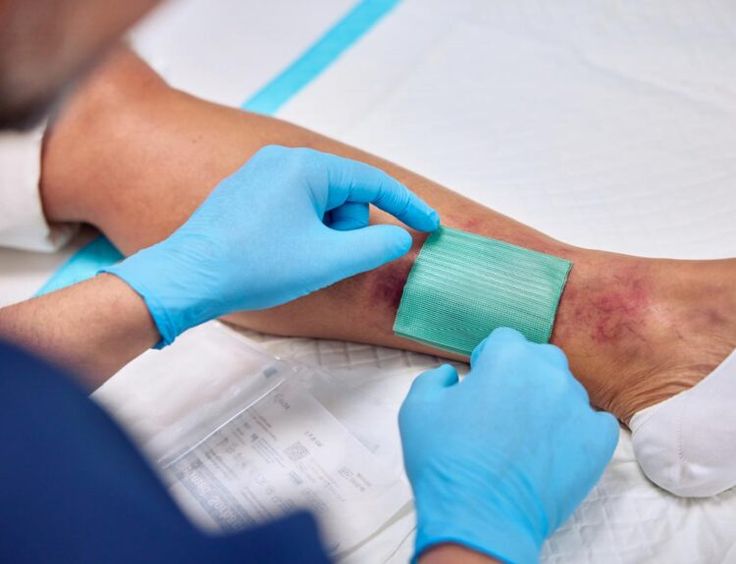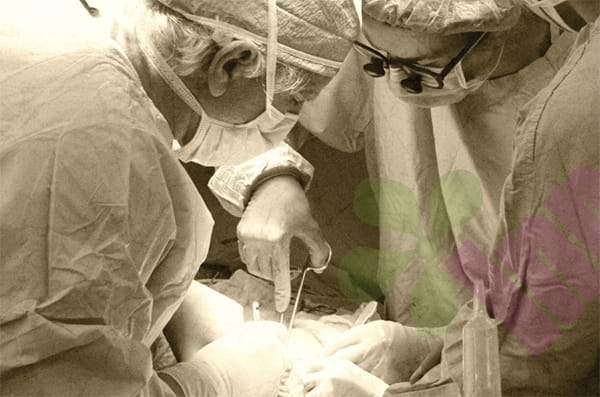Superficial surgical site infection (SSI) is a common and important complication after surgery. This infection typically occurs within 30 days after surgery and is confined to the skin and subcutaneous tissue at the incision site. While not life-threatening, it can prolong recovery, increase patient pain, and potentially compromise the ultimate surgical outcome. Understanding its characteristics, prevention, and management methods is crucial for a smooth postoperative recovery.

Why are wounds prone to infection after surgery?
Post-surgical incisions carry a certain risk of infection, which is normal. Infection occurs when bacteria break through the body's defenses, multiply at the incision site, and cause an inflammatory response. Superficial infection is characterized by redness and swelling of the skin around the incision, a noticeable warmth to the touch, and pain when pressed. The incision may have purulent discharge, and sometimes yellow-white pus spots may be seen around the sutures. Some patients also experience a throbbing pain in the incision, especially during movement. These symptoms usually begin 5-7 days after surgery, but may occur earlier or later.
There are many reasons for infection. Factors related to the surgery itself are very important, such as prolonged surgery, severe tissue damage during surgery, and poor blood supply to the incision site. The patient's physical condition is also critical. Poorly controlled diabetes, obesity, malnutrition, and low immunity will increase the risk of infection. Improper postoperative care is also a common cause, such as not changing the dressing in time after it is contaminated, getting the incision wet too early, and not keeping the incision dry and clean as prescribed by the doctor. Smoking is also a risk factor that many people ignore. Nicotine can affect blood circulation, reduce oxygen and nutrient supply to the incision site, and weaken local resistance.
How to treat and care for this type of wound?
If you find that the incision may be infected, don't panic, but don't take it lightly either. The first step is to observe the incision carefully. Mild infection may only require enhanced local care, such as increasing the frequency of dressing changes and using antibacterial dressings. It is important to thoroughly clean the incision with normal saline to remove surface secretions and some bacteria. If suppuration is found around the sutures, the doctor may need to remove some of the sutures in advance to facilitate drainage. For incisions with more exudate, absorbent dressings such as alginate or foam dressings are more suitable. They can keep the incision dry and reduce the environment for bacterial growth.
When symptoms of infection are more pronounced, antibiotics may be necessary. Superficial infections usually only require oral antibiotics, commonly used ones like cephalosporins or clindamycin. Take the medication on time and in the correct dosage, and complete the full course of treatment even if symptoms improve to avoid developing drug resistance. Continue to care for the incision and observe daily for changes. If fever, increased pain at the incision, or widespread redness and swelling develop, the infection may be worsening and requires prompt medical attention.
How to prevent postoperative wounds?
Key infection prevention measures begin before surgery. Before surgery, you should strive to improve your physical condition, control your blood sugar, quit smoking for at least two weeks, and supplement with adequate protein and vitamins. During the preoperative shower, you can use a disinfectant containing chlorhexidine to clean your skin, paying particular attention to the surgical area. Once in the operating room, medical staff will perform standardized skin disinfection and use sterile drapes, all of which are crucial steps in preventing infection.
Postoperative care is equally important. Keeping the incision dry and clean is the basic principle, and do not get it wet without the doctor's permission. Wash your hands and use aseptic techniques when changing the dressing. Exercise moderately, avoiding complete immobility that leads to poor blood circulation, and also preventing excessive activity that pulls on the incision. Nutritional support cannot be ignored, and adequate protein, vitamin C, and zinc intake must be ensured after surgery. These nutrients are essential for wound healing. If you are a high-risk group for infection, such as a diabetic patient, you should pay more attention to daily observation of the incision.
Although superficial wound infections are common, most can be successfully controlled with standard prevention and treatment. Early detection and timely intervention are key. After surgery, make it a habit to observe your incision daily, noting any redness, swelling, heat, pain, or unusual discharge. Follow your doctor's instructions for regular follow-up visits to assess healing. Remember, prevention is always better than a cure. By attending to every step, from preoperative preparation to postoperative care, you can minimize the risk of infection and ensure optimal surgical outcomes. For more information on Innomed® Silicone Scar Dressing, refer to the Previous Articles. If you have customized needs, please contact us; we will wholeheartedly. At longterm medical, we transform this data by innovating and developing products that make life easier for those who need loving care.
Editor: kiki Jia

 English
English عربى
عربى Español
Español русский
русский 中文简体
中文简体








